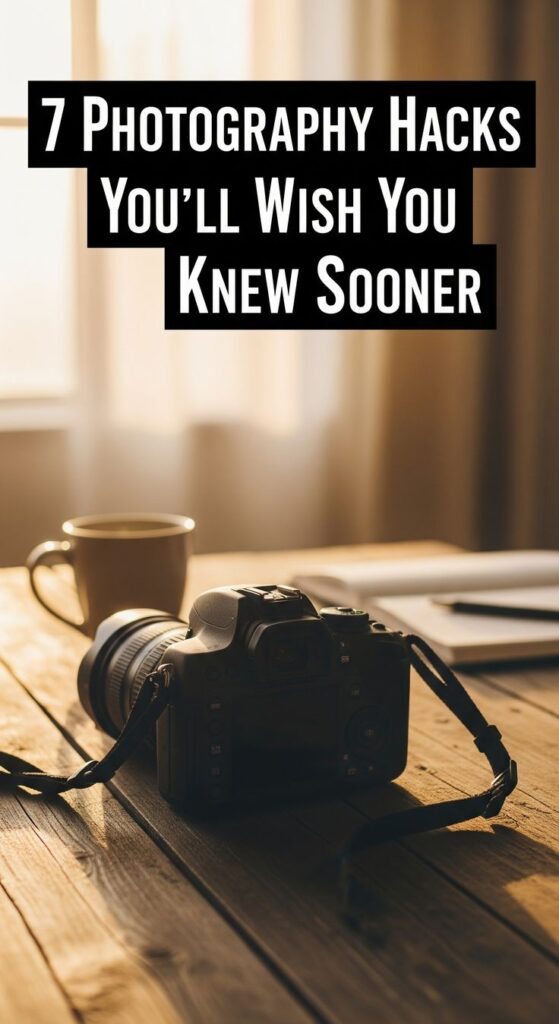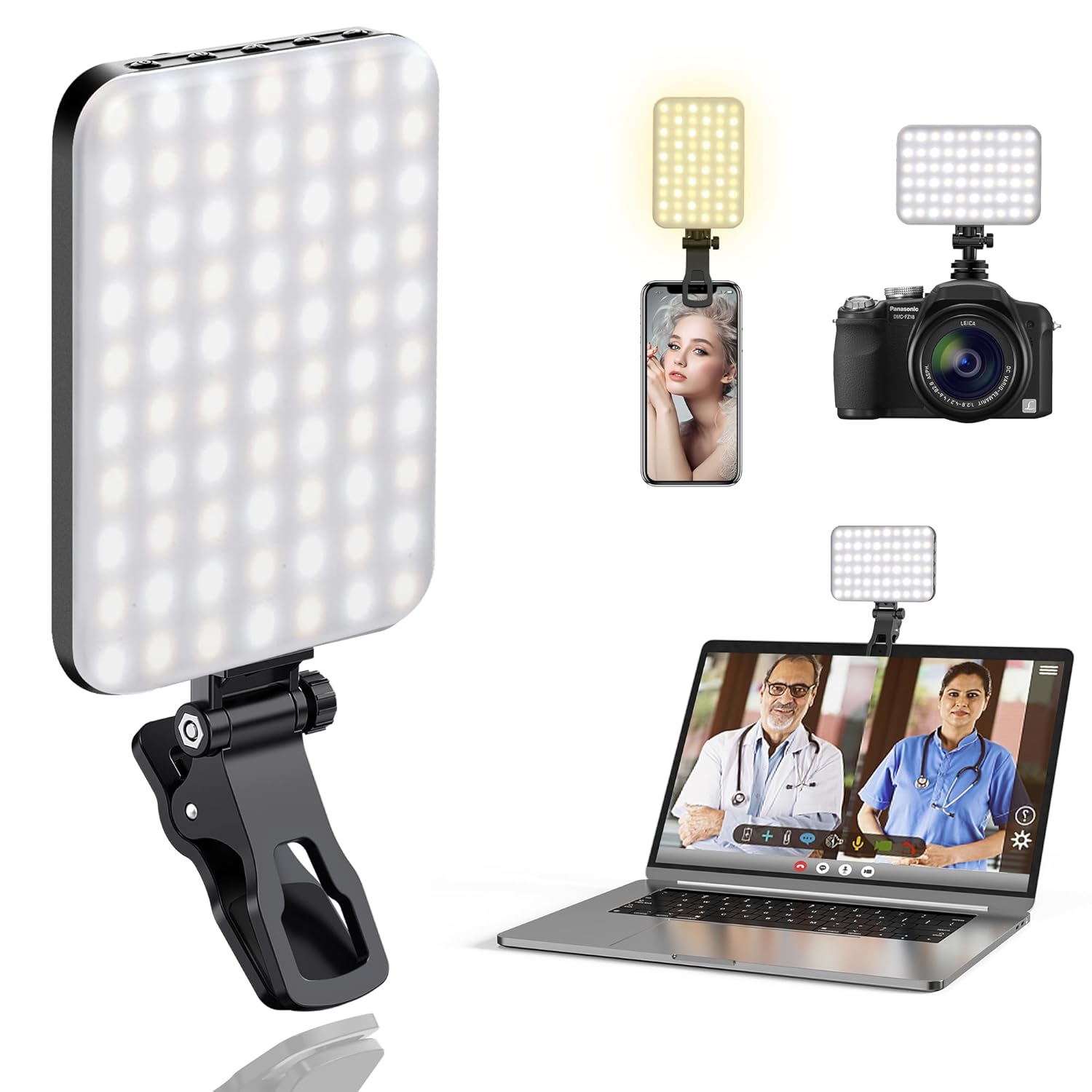You know, when I first picked up a camera, I had no clue what I was doing. Half my pictures were blurry, and the other half looked like they were taken inside a cave. But with a little patience, curiosity, and countless “oops” moments, I started to see how magical photography truly is.

So today, I’m sharing 7 quick tips that helped me grow from a confused beginner into someone who genuinely enjoys every click of the shutter. Let’s dive in!
Table of Contents
🌅 Learn to See the Light
I used to chase perfect locations, thinking that was the secret. But one day, I realized it’s not the place — it’s the light that shapes the mood. Morning and evening light wrap everything in a golden tone, while harsh noon light can ruin the magic.
Now, whenever I shoot, I look at how light falls on faces and objects before I even lift my camera. And honestly, once I started doing that, everything changed.
💡 My favorite light helpers: I keep a portable LED ring light in my bag for portraits and a 5-in-1 reflector disc to balance shadows when I’m shooting outdoors. Trust me, they make a world of difference.

ALTSON 60 LED Portable Selfie Light Video Conference Lighting with Clip & Camera Tripod Adapter Rechargeable 2200mAh CRI 97+, 3 Light Modes for Phone iPhone Webcam Laptop Photo Makeup
View On Amazon
Etekcity 24 (60cm) 5-in-1 Photography Reflector
View On Amazon🎒 Keep Your Gear Simple (Less is More)
When I first started, I thought I needed every lens in the store. Big mistake! You don’t need an entire arsenal of gear — you just need one camera that feels right in your hands.
I personally started with a Canon EOS Rebel T7, and later switched to a Sony ZV-E10 for travel shoots. Both are light, affordable, and perfect for beginners.
🎯 What I always keep with me:
- A sturdy tripod (for long exposures and low light)
- A camera cleaning kit to protect my lens
- A 50mm f/1.8 lens — small, sharp, and ideal for portraits

K&F CONCEPT 64 inch/163 cm Camera Tripod,Lightweight Travel Outdoor DSLR Tripods with 360 Degree Ball Head Load Capacity 17.6 lbs/8 kg
View On Amazon
Altura Photo Camera Cleaning Kit - Camera Accessories Electronics Bundle - Lens Cleaner Spray, Brush, Pen, Cloths, Wipes, Air Blower - DSLR Photography Accessories Lens Cleaning Kit Photographer Gifts
View On Amazon
Canon EF 50mm f/1.8 STM Lens International Version
View On AmazonLess gear means fewer distractions. It forces you to focus on creativity instead of settings.
🏠 Practice Every Day, Even Indoors
There were days when I didn’t have time to go outside, so I practiced at home. And guess what? Some of my best photos came from ordinary corners of my room.
I’d photograph my cup of coffee, sunlight through the window, or my cat stretching on the floor. Over time, my eye for detail improved — I started noticing beauty in things I used to ignore.
🏡 If you want to try this too: Set up a mini home studio kit — I use a foldable photo light box and a clean backdrop set from Amazon. It’s perfect for product photos or creative practice sessions.

PULUZ Mini Photo Studio Light Box, Photo Shooting Tent kit
View On Amazon🎨 Understand Composition, Not Just Buttons
At first, I thought mastering my camera settings was enough. But when I learned about composition, my shots instantly looked more professional.
Now, I always use the rule of thirds, play with leading lines, and keep an eye out for interesting frames. Instead of just clicking, I compose — and that’s where storytelling begins.
📘 What helped me a lot: A small photography composition guidebook I bought online. It’s full of visual examples and easy exercises. I also took an online photography course that broke down the basics step-by-step.

Digital Photography Complete Course: Learn Everything You Need to Know
View On Amazon🪄 Edit Lightly, Don’t Overdo It
Editing can turn a good photo into a stunning one — but it’s so easy to get carried away. I remember when I first discovered filters… I turned every sky neon orange. 😅
Now, I’ve learned to keep things natural. I use Lightroom for subtle adjustments — a touch of contrast, brightness, and warmth. That’s it.
🎨 My go-to tools:
- Lightroom Preset Packs for quick edits
- Adobe Creative Cloud subscription (worth every penny)
The goal isn’t to change reality — it’s to highlight its beauty.

Adobe Creative Cloud Pro | 20+ creative apps plus 100GB Storage | 12-Month Subscription with Auto-Renewal|PC/Mac
View On Amazon📂 Shoot in RAW, Thank Yourself Later
I’ll be honest: when I heard about shooting in RAW, I didn’t care much. Then one day, a photo I loved looked terrible after editing — that’s when I switched.
RAW format keeps every detail alive. You can fix exposure, shadows, or colors later without ruining the picture quality. Now, I never shoot in JPEG again.
💾 What I recommend:
- A high-speed SD card (128GB or more) so you don’t run out of space
- An external hard drive for backup — I use mine to store years of memories safely
Trust me, your future self will thank you for it.

SanDisk 256GB Extreme PRO SDXC UHS-I Memory Card
View On Amazon💪 Learn from Mistakes (And Keep Shooting)
Every photographer has those days when nothing turns out right. I’ve had plenty of them — blurry photos, bad lighting, awkward poses. But here’s what I learned: those “bad shots” teach you more than perfect ones ever could.
Whenever I mess up, I note what went wrong in my photography journal and try again. Slowly but surely, improvement follows.
📔 If you want to stay consistent: Use a photography logbook to track settings, lighting, and results. I also joined an online photography community for feedback — it’s like having mentors without the pressure.
💰 Bonus: How I Started Earning from My Photos
When I got confident with my shots, I uploaded them to stock photo sites like Shutterstock and Adobe Stock. The first time I earned a few dollars, I was thrilled!
Later, I created my own photography portfolio website using platforms like Pixpa and Squarespace. Slowly, people started booking small shoots — birthdays, products, portraits. It’s an incredible feeling when your passion starts paying off.
🌈 Final Thoughts
Photography isn’t about fancy cameras or editing tricks. It’s about the joy of capturing life as it unfolds. If there’s one thing I’ve learned, it’s that every photo you take is a lesson in disguise.
So pick up your camera — even if it’s just your phone — and start shooting. Don’t wait for the perfect moment. Create it.
